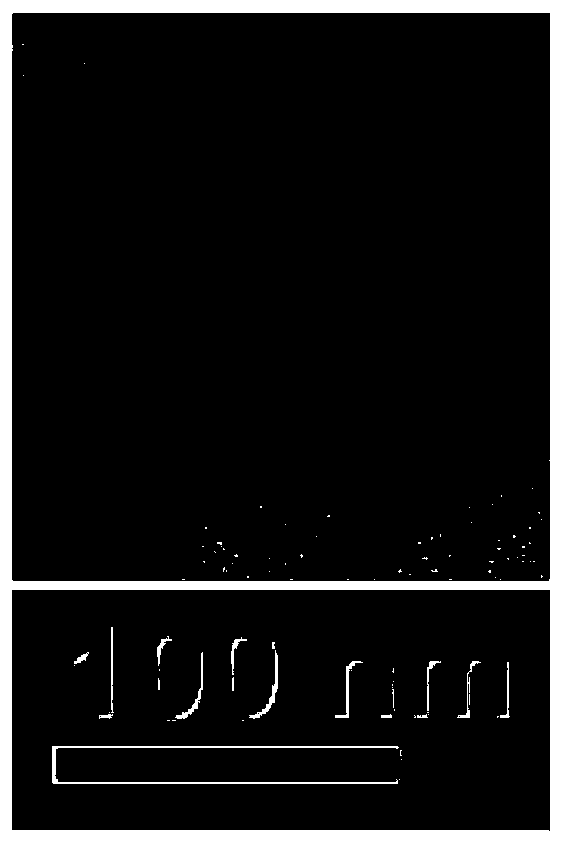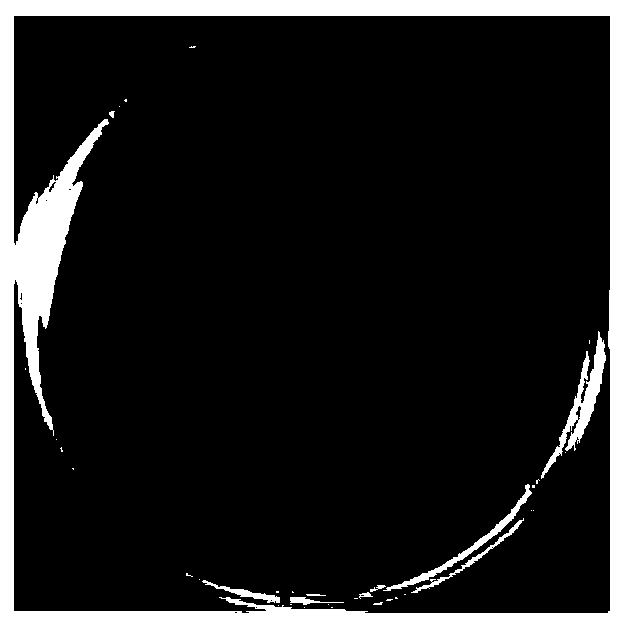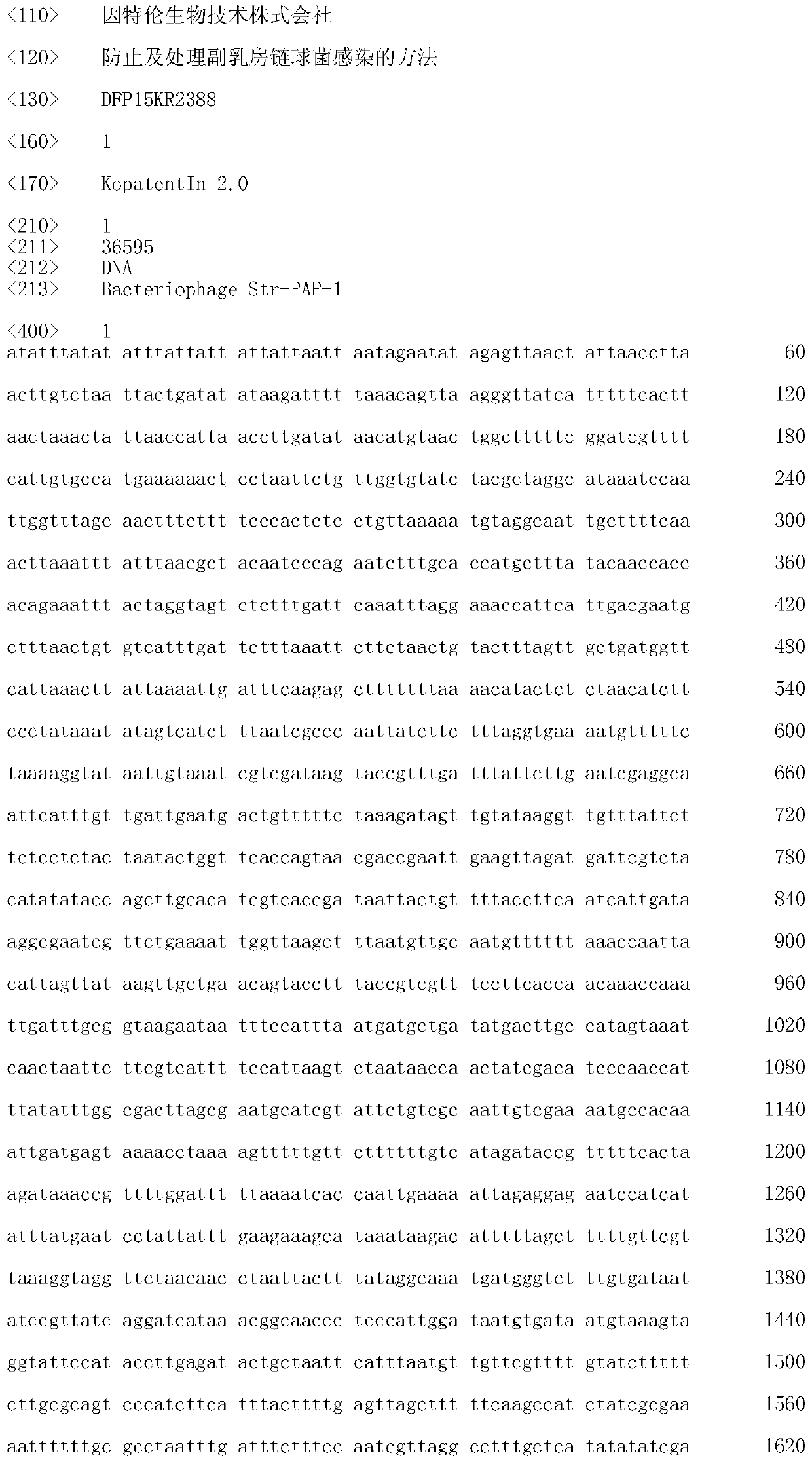A bacteriophage str-pap-1 and a composition for preventing and treating Streptococcus parauberis infection using the phage as an active ingredient
An active ingredient and phage technology, applied in the direction of phage, virus/phage, medical raw materials derived from virus/phage, etc., to achieve the effect of small side effects and high specificity
- Summary
- Abstract
- Description
- Claims
- Application Information
AI Technical Summary
Problems solved by technology
Method used
Image
Examples
Embodiment 1
[0036] Embodiment 1: isolate the phage that can kill Streptococcus parauberis
[0037] The samples obtained from the natural environment or animal samples were used in the screening of phages capable of killing Streptococcus parauberis. In addition, the Streptococcus parauberis used for isolation of the phage was previously isolated and identified as Streptococcus parauberis by the present inventors.
[0038] Next, the phage isolation process is described in detail. The collected samples were added together with Streptococcus parauberis to TSB (Tryptic Soy Broth) medium inoculated at a ratio of 1 / 1000 (casein digestion medium, 17g / L; soybean digestion medium, 3g / L; right Glucose, 2.5g / L; NaCl, 5g / L; Dipotassium hydrogen phosphate, 2.5g / L), and then cultured overnight at 30°C with shaking. After culturing, centrifugation was performed at 8,000 rpm for 20 minutes to recover the supernatant, which was then filtered through a 0.45 μm filter. The presence or absence of bacteri...
Embodiment 2
[0044] Embodiment 2: Genome isolation and sequence analysis of bacteriophage Str-PAP-1
[0045] The genome of phage Str-PAP-1 was isolated as follows. For genome isolation, the phage suspension obtained by the same method as in Example 1 was used. First, in order to remove DNA and RNA of Streptococcus parauberis that may be contained in the suspension, 200 U of DNase I and RNase A were respectively added to 10 ml of the phage suspension, and then left at 37° C. for 30 minutes. After standing for 30 minutes, in order to remove the activity of DNase I and RNase A, 500 μl of 0.5M ethylenediaminetetraacetic acid (EDTA) was added and then left to stand for 10 minutes. Then, it was left to stand at 65° C. for an additional 10 minutes. In order to disintegrate the outer wall of the phage, 100 μl of proteinase K (20 ㎎ / ml) was added and reacted at 37° C. for 20 minutes. Then, 500 µl of 10% sodium dodecyl sulfate (SDS) was added, and the mixture was reacted at 65° C. for 1 hour. A...
Embodiment 3
[0049] Embodiment 3: the investigation to the ability of bacteriophage Str-PAP-1 killing Streptococcus parauberis
[0050] The ability of the isolated phage Str-PAP-1 to kill Streptococcus parauberis was investigated. The same method as in Example 1 was used for the investigation of the killing ability, and it was observed whether a transparent ring was formed by a drop test. The Streptococcus parauberis used in the killing ability analysis was isolated and identified by the present inventors as Streptococcus parauberis, and there are 55 species in total. Phage Str-PAP-1 has the ability to kill 35 strains of Streptococcus parauberis used in the experiment. Representative experimental results such as figure 2 shown. In addition, the effects of phage Str-PAP-1 on Edwardsiella tarda, Vibrio anguillarum, Vibrio ichthyoenteri, Lactococcus garvieae and Streptococcus dolphin were investigated. iniae) killing ability. The results showed that phage Str-PAP-1 had no ability to k...
PUM
| Property | Measurement | Unit |
|---|---|---|
| absorbance | aaaaa | aaaaa |
Abstract
Description
Claims
Application Information
 Login to View More
Login to View More - R&D
- Intellectual Property
- Life Sciences
- Materials
- Tech Scout
- Unparalleled Data Quality
- Higher Quality Content
- 60% Fewer Hallucinations
Browse by: Latest US Patents, China's latest patents, Technical Efficacy Thesaurus, Application Domain, Technology Topic, Popular Technical Reports.
© 2025 PatSnap. All rights reserved.Legal|Privacy policy|Modern Slavery Act Transparency Statement|Sitemap|About US| Contact US: help@patsnap.com



